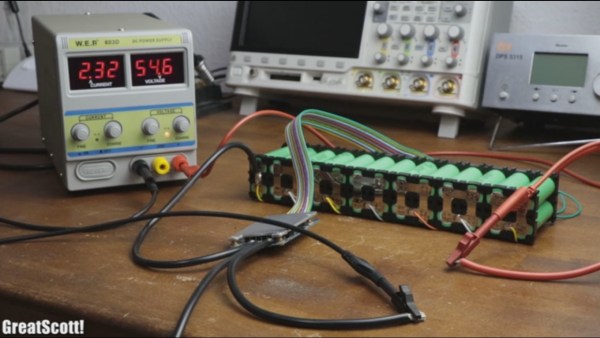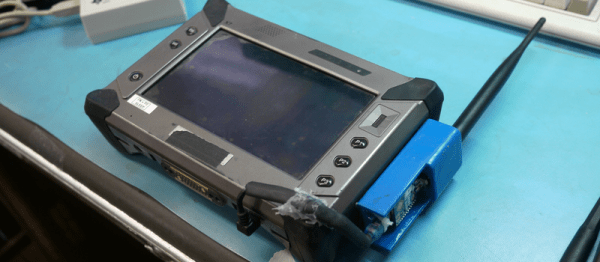If you’ve ever worked with multi-cell rechargeable battery packs, you know that the individual cells will eventually become imbalanced. To keep the pack working optimally, each cell needs to be analyzed and charged individually — which is why RC style battery packs have a dedicated balance connector. So if you know it, and we know it, why doesn’t Dyson know it?
It’s that question which inspired [tinfever] to start work on the FU-Dyson-BMS project. As you might have surmised from the name, [tinfever] believes that Dyson has intentionally engineered their V6 and V7 batteries to fail by not using the cell balancing function of the onboard ISL94208 battery management IC. What’s worse, once the cells get as little as 300 mV out of balance, the controller considers the entire pack to be shot and will no longer allow it to be charged.

Or at least, that’s what used to happen. With the replacement firmware [tinfever] has developed, the pack’s battery management system (BMS) will ignore imbalanced cells so you can continue to use the pack (albeit at a reduced capacity). Of course the ideal solution would have been to enable cell balancing on the ISL94208, but unfortunately Dyson didn’t include the necessary resistors on the PCB. Though it’s worth noting that earlier versions of the board did have unpopulated spots for them, lending some credence to the idea that their omission was intentional on Dyson’s part.
But not everyone is onboard with the conspiracy theory. Over on the EEVBlog forums, some users pointed out that a poorly implemented cell balancing routine can be more problematic than not having one at all. It’s possible that Dyson had some bad experiences with the technology in earlier packs, and decided to move away from it and try to compensate by using higher-quality cells. That said, at least one person in the thread was able to revive their own “dead” battery pack by installing this unofficial firmware, so whether intentional or not, it seems there’s little debate that usable batteries are indeed being prematurely marked as defective.
Proper cell balancing is key even in DIY projects, so we do have to agree that it seems more than a little unusual that Dyson would intentionally turn off this important feature in their packs. But the jury is still out on whether or not Sir James is trying to pull a fast one on his customers — as Hanlon’s Razor states, “never attribute to malice that which is adequately explained by stupidity”.
Continue reading “Fighting Back Against Dodgy Dyson Batteries”
















